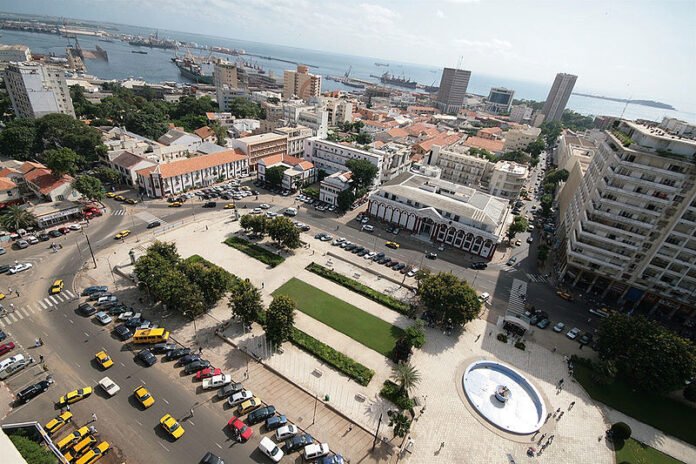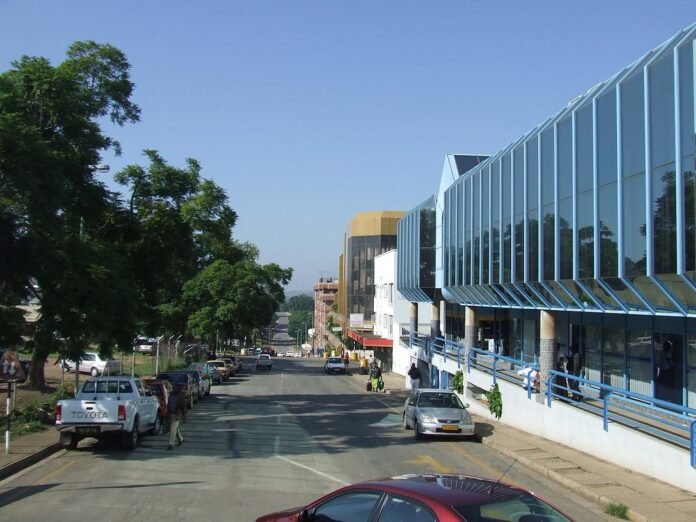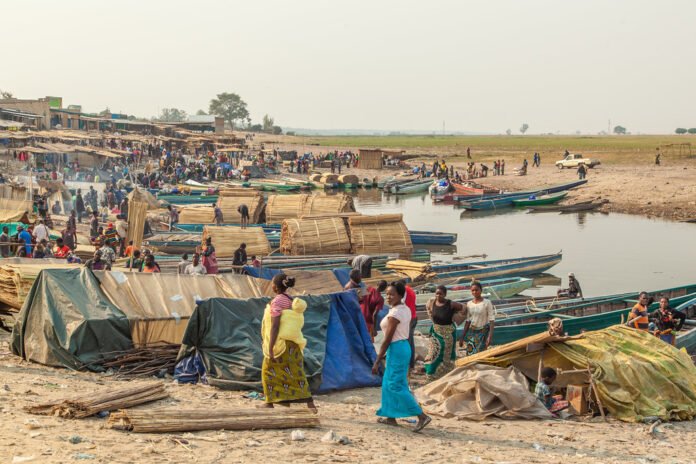Senegal’s health insurance landscape consists of both public and private schemes, each designed to serve different segments of the population while collectively contributing to the goal of universal health coverage (UHC). Despite this shared goal, there are key differences and notable similarities between these two types of health insurance.
Differences
1. Coverage and Target Population
Public health insurance in Senegal focuses primarily on broad population coverage, especially targeting vulnerable groups and informal sector workers. Programs such as the Universal Health Coverage (UHC) initiative and the Community-Based Health Insurance (Mutuelles de Santé) aim to increase access among rural populations, low-income groups, and those outside formal employment. For instance, UHC targets 75% population coverage by 2025, with free care for children under 5 and special programs for elderly and maternal care.
In contrast, private health insurance predominantly serves urban, middle- and high-income individuals, formal sector employees, expatriates, and business groups. Private plans often cover outpatient and inpatient care with access to private hospitals, specialist consultations, and sometimes international care options—services generally beyond the scope of public schemes.
2. Funding and Financial Structure
Public schemes are largely funded through payroll contributions (in the case of formal workers), state subsidies, and community risk pooling. The Mandatory Health Insurance (AMO), managed by social security institutions, is payroll-funded, while community-based mutuals rely on voluntary contributions from members. The government also subsidizes the poorest segments to ensure equitable access.
Private insurance operates on a premium-based model, where individuals or employers pay monthly or annual fees directly to insurance companies. These premiums vary widely depending on the level of coverage, benefits, and risk assessment. Employer-sponsored private insurance typically negotiates group premiums to reduce costs.
3. Services and Benefits
Public insurance focuses on essential health services like primary care, preventive services, maternal and child health, and management of common chronic diseases. It also includes free healthcare policies for specific vulnerable populations.
Private health insurance tends to offer more comprehensive and customizable benefits, including access to private medical facilities with higher quality care, shorter waiting times, and services such as elective procedures, specialist care, diagnostics, and international emergency coverage. This makes private plans attractive to those seeking faster or specialized medical attention.
4. Geographic and Socioeconomic Reach
Public schemes try to cover the entire country, including rural and underserved areas, though with varying success. Challenges remain with regional inequalities and reaching remote populations.
Private insurance is mostly concentrated in urban centers, with limited penetration in rural areas due to affordability and infrastructure limitations.
Similarities
1. Shared Goal of Improving Healthcare Access
Both public and private insurance systems aim to improve healthcare access and reduce out-of-pocket expenditure for Senegalese citizens. The public sector provides a safety net to vulnerable populations, while private insurance supplements coverage for those who can afford more extensive services.
2. Risk Pooling Mechanism
At their core, both public and private insurance pool financial risks among members to spread healthcare costs. Public schemes pool risks broadly across the population or specific groups (formal/iTop 5 Public Health Insurance Schemes in Senegal
Senegal’s public health insurance landscape is characterized by several key schemes aimed at expanding access to healthcare, especially among vulnerable and underserved populations. These programs form the backbone of the country’s efforts toward Universal Health Coverage (UHC). Below are the top five public health insurance schemes in Senegal, highlighting their costs, coverage features, accessibility, financial mechanisms, and consumer satisfaction.
1. Universal Health Coverage (UHC) Program
Cost:
Low to moderate contributions based on income, with significant government subsidies for the poorest.
Available Services/Coverage Features:
The UHC program focuses on primary healthcare, preventive services, essential medicines, and targeted free services for vulnerable groups like children under 5. Special programs under UHC include coverage for cesarean sections, dialysis, and care for seniors over 60 (Plan Sésame).
Open for:
Intended for all Senegalese citizens, with priority for vulnerable populations and those in the informal sector.
Core Financial Features:
Financed through a mix of state subsidies, contributions scaled by income, and community pooling. Efforts are ongoing to sustainably finance and expand the scheme nationwide.
Consumer Satisfaction:
Moderate satisfaction, with praise for expanded access but concerns over regional disparities and service quality, especially in rural areas.
2. Mandatory Health Insurance (AMO – Assurance Maladie Obligatoire)(Official Website: https://www.cmu.sn)
Cost:
Payroll contributions shared between employer and employee, generally set as a percentage of salary.
Available Services/Coverage Features:
Basic medical coverage including outpatient and inpatient care in public facilities. The scheme covers formal sector workers and their dependents.
Open for:
Limited to formal sector employees, public servants, and some private-sector workers.
Core Financial Features:
Funded via payroll taxes, making it a contributory social insurance scheme tied to formal employment.
Consumer Satisfaction:
Generally positive among formal workers, though some report gaps in service and bureaucratic delays.
3. National Health Insurance Fund (CNAM – Caisse Nationale d’Assurance Maladie)(Official Website: https://www.cnam.sn)
Cost:
Affordable premiums aimed to encourage widespread enrollment, subsidized for low-income groups.
Available Services/Coverage Features:
Covers a broad range of health services including consultations, hospitalization, essential medicines, and maternity care.
Open for:
Accessible to both formal and informal sector workers, with efforts to increase inclusion in rural areas.
Core Financial Features:
Risk pooling across a large population base to subsidize care costs and improve financial protection.
Consumer Satisfaction:
Improving, as CNAM extends benefits beyond the formal sector, though some gaps remain in coverage consistency.
4. Community-Based Health Insurance (Mutuelles de Santé)(Official Website: https://www.mutuelle-sante.sn)
Cost:
Low-cost voluntary contributions paid by members, designed to be affordable for rural and informal workers.
Available Services/Coverage Features:
Primarily outpatient services, preventive care, and some inpatient treatments at designated health centers. Emphasis on mutual risk-sharing within communities.
Open for:
Voluntary enrollment open mainly to informal sector workers and rural populations.
Core Financial Features:
Operates as mutual organizations pooling risks locally, heavily dependent on community participation.
Consumer Satisfaction:
Generally positive within enrolled communities, valued for increasing access, though limited by low coverage rates and administrative capacity
5. Free Healthcare Policies (Targeted Public Programs)(Official Website: https://www.senegal.gouv.sn)
Cost:
Fully funded by the government and donors; no direct cost to beneficiaries.
Available Services/Coverage Features:
Free healthcare for children under 5, maternal health services including prenatal and delivery care, and emergency services for vulnerable groups.
Open for:
Targeted to specific groups such as young children, pregnant women, and the poorest segments of the population.
Core Financial Features:
Funded through government budget allocations and international aid, aiming to reduce out-of-pocket expenses.
Consumer Satisfaction:
Highly appreciated by beneficiaries, especially in reducing financial barriers to care, though service quality and facility availability vary.
nformal workers), while private insurers pool risks within defined policyholder groups.
3. Dependence on Contributions and Premiums
Both systems require financial contributions—whether via taxes, payroll deductions, or premiums—to function sustainably. This financial input supports the delivery of medical services and ensures the continuity of coverage.
4. Role in National Health System
Public and private insurance co-exist as complementary components within Senegal’s health system. The public system forms the foundation of universal coverage, while private insurance provides additional options and fills gaps in service quality and accessibility.
Top 5 Private Health Insurance Providers in Senegal
Senegal’s private health insurance sector primarily caters to middle- and high-income urban residents, expatriates, and employees in formal sectors who seek comprehensive healthcare options beyond public services. The private insurers offer a range of plans including outpatient and inpatient care, specialist consultations, and sometimes international coverage. Below are the top private health insurance providers operating in Senegal, with details on cost, services, accessibility, financial features, and consumer satisfaction.
1. April International Senegal(Official Website: https://www.april-international.com/en/destinations/africa/health-insurance-in-senegal)
Cost:
Premiums vary widely depending on the chosen plan, ranging from affordable basic coverage to premium plans costing several hundred euros annually.
Available Services/Coverage Features:
Covers outpatient consultations, hospitalization, diagnostics, maternity care, emergency evacuation, and repatriation. International coverage options are available for expatriates and frequent travelers.
Open for:
Open to individuals, families, and companies. Plans are available to expatriates, locals, and corporate groups.
Core Financial Features:
Flexible payment plans, risk pooling across global clients, and options for tailored coverage to suit individual needs.
Consumer Satisfaction:
High satisfaction, especially among expatriates, for quality of service, quick claims processing, and extensive provider networks.
2. Sunu Assurances(Official Website: https://sunu-group.com/en/home)
Cost:
Moderate to high, depending on the level of coverage and risk profile. Premiums are competitive within the West African market.
Available Services/Coverage Features:
Provides outpatient care, hospitalization, surgery, maternity, and chronic disease management. Some plans include dental and optical coverage.
Open for:
Primarily urban residents and formal sector employees, with group plans for companies.
Core Financial Features:
Strong focus on group insurance schemes, negotiated rates with medical providers, and co-payment options to manage costs.
Consumer Satisfaction:
Generally positive, noted for reliable customer service and broad local network, though some policyholders report occasional delays in claim reimbursements.
3. Allianz Senegal(Official Website: https://www.allianz.sn)
Cost:
Premiums are on the higher side, reflecting comprehensive coverage and international standards.
Available Services/Coverage Features:
Comprehensive inpatient and outpatient services, specialist consultations, emergency evacuation, repatriation, and wellness programs.
Open for:
Open to individuals, families, and corporate clients, including expatriates seeking international coverage.
Core Financial Features:
Global risk pooling, premium payment flexibility, and advanced digital claims processing.
Consumer Satisfaction:
High among expatriates and corporate clients for responsiveness and extensive international provider networks
4. AXA Senegal(Official Website: https://www.axa.sn)
Cost:
Moderate to high, competitive with other international insurers.
Available Services/Coverage Features:
Inpatient and outpatient care, maternity, specialist services, and optional international travel coverage.
Open for:
Available to local residents, expatriates, and businesses with group insurance plans.
Core Financial Features:
Offers customizable plans with co-pay and deductible options; strong emphasis on corporate client management.
Consumer Satisfaction:
Positive feedback for customer support and network coverage, though some individual clients desire faster claims turnaround.
5. Bupa Global (available in Senegal)(Official Website: https://www.bupaglobal.com)
Cost:
Premiums are premium-tier, reflecting global coverage and high-end service offerings.
Available Services/Coverage Features:
Extensive coverage including outpatient, inpatient, maternity, dental, mental health services, emergency evacuation, and repatriation.
Open for:
Focused mainly on expatriates, high-net-worth individuals, and multinational corporations.
Core Financial Features:
Worldwide provider access, cashless hospital billing, and comprehensive wellness programs.
Consumer Satisfaction:
Excellent reputation globally and in Senegal, with high ratings for service quality and claims efficiency.
READ MORE: Private and public health insurance of Ghana (Make informed choices)


